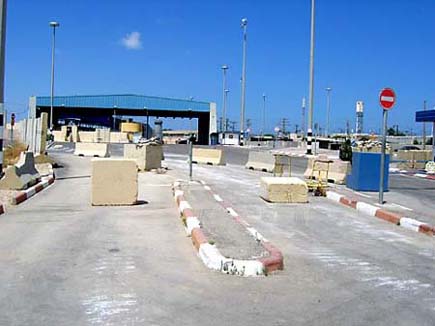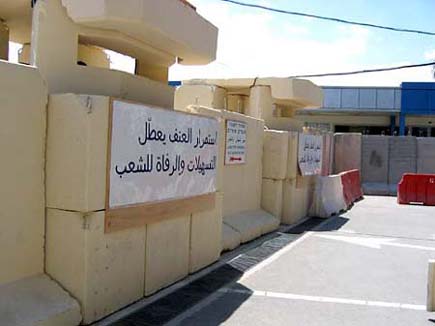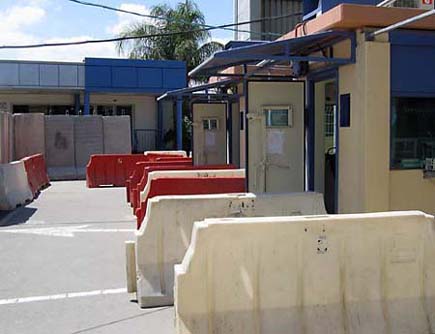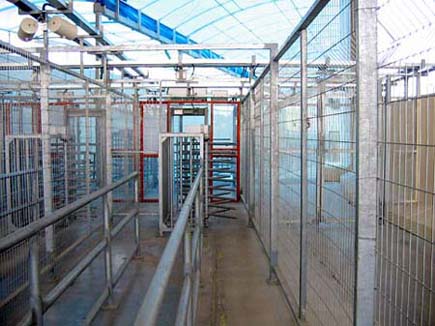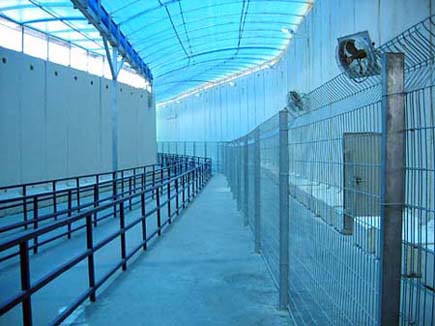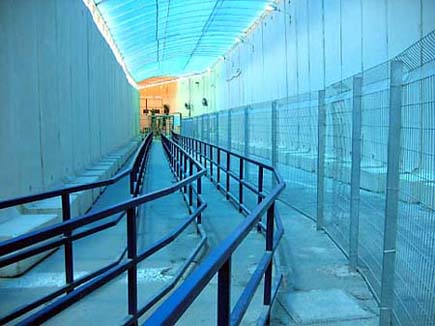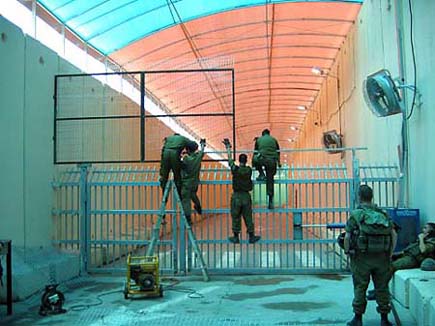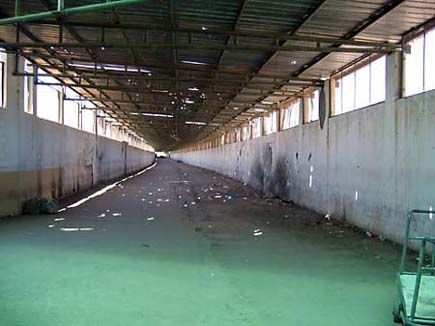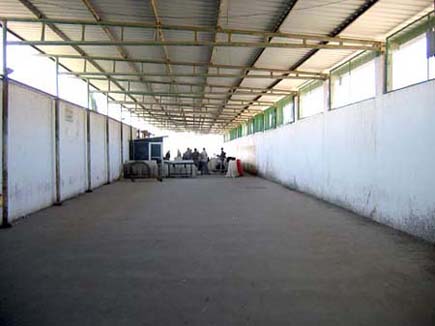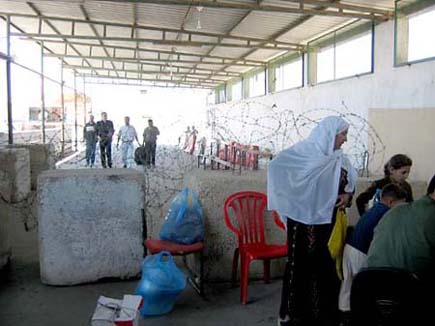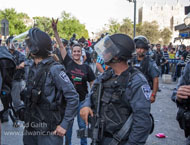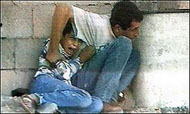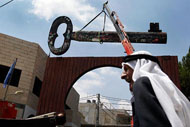The Erez Crossing Point is the crossing point for people moving into and out of Gaza. The following phrase was recently used to describe the structure of this checkpoint: “the passage is similar to the design developed by Temple Grandin.” Temple Grandin is well-known for two reasons: first, she is a phenomenal equipment designer of cattle slaughter facilities for the livestock industry; and second, perhaps as grounds for the former, this talented woman is autistic. So why then is the Erez Crossing Point—a passage for Palestinians, as fellow human beings—patterned after a design developed for cattle?
In Grandin’s own words, “I think in pictures. Visual thinking has enabled me to build entire systems in my imagination. Cattle are frightened by high contrasts of light and dark as well as by people and objects that move suddenly. Cattle refuse to move through chutes where the sun casts harsh shadows across them. Until I made this observation, nobody in the feedlot industry had been able to explain why one veterinary facility worked better than the other. It was a matter of observing the small details that made a big difference. The challenge was to design an entrance that would encourage the cattle to walk in voluntarily [because they would not panic].”
Cattle handling facilities designed by Grandin are appreciated among animal rights activists, because they diminish the stress to cattle during handling and forced transport, exploiting the natural behavior of cattle and patterning the structures they pass through in such a way as to cause them less distress by masking threats and so improve handling efficiency. Improved efficiency and lower stress being such positive objectives for any transitional facility, how many border check points or airport security lines are patterned after cattle slaughter facilities? Not any—other than the Erez crossing point.
So how did these two dramatically different lines of work intersect? Speculation alone affords an explanation. Dr. Temple Grandin acts as a consultant to the United States Department of Agriculture where USDA kosher slaughter inspectors have certainly become familiar with her work. But how the familiarity translated to implementation is a mystery. The greater question perhaps is why pattern a security station after a cattle facility? We are talking about people, not cattle, are we not?
Is the Erez Crossing Point designed in such a way as to diminish the level of stress it causes to human beings that pass through it? A sign at the entrance to the passage chastises those that enter with the inanity of preaching: "Continuing with violence results in the withholding of ease of access and luxury for the people." Israelis soldiers at the scene only interact with the ‘person’ passing through via remote control. The human being passing through does not have direct contact with any other human person, but rather holds up their identification card to be seen from a distance. When a person exiting from Gaza approaches the turnstile (yes, a turnstile), a disembodied voice, rough and rude, tells him or her to drop bags to the floor, lift up clothes, turn around, etc.
All three crossings at Gaza: Karni—a passage for goods, Erez—a passage for people, and Rafah—a passage to Egypt, were set up under the 1993 Oslo accords to improve living conditions in Gaza. According to the United Nations Office for the Coordination of Humanitarian Affairs, traffic through the terminal can be between 1,100 to 3,700 people per day, where approximately 600 individuals are workers in the Erez industrial zone. At least the monitoring body for the checkpoint is not the Department of Agriculture.
The population of Gaza includes approximately 1,376,289 Palestinians and more than 5,000 Israeli settlers. Israeli military measures resulted in the destruction of much of the area’s capital plant, disruption of administrative structures and widespread business closures. International aid of $2 billion to Gaza and the West Bank in 2004 prevented the complete collapse of the economy. And Israeli authorities continued to tighten security restrictions at the Erez crossing point, where today only the most senior Palestinian National Authority officials are able to cross through. For all the care to design Erez after a considerate and compassionate cattle handling facility for the human beings that are ‘herded’ through it and imprisoned within Gaza, the facility symbolizes how the Israeli government fails to address Palestinians as human beings and, instead, dehumanizes them and succeeds in psychologically clouding their humanity to Israelis and the rest of the world while it pushes them off land and herds them into cages.
It is slightly ironic that Israel would not comprehend the 38 years of frustration that speak out from behind the fences and erupt out of Gaza with violence that cries out, “Don’t fence me in!” The truth is that humanity has reached a new level of shame at the site of this checkpoint—the violence that surrounds it and the justifications that either side uses to justify the commitment of crimes against humanity.




